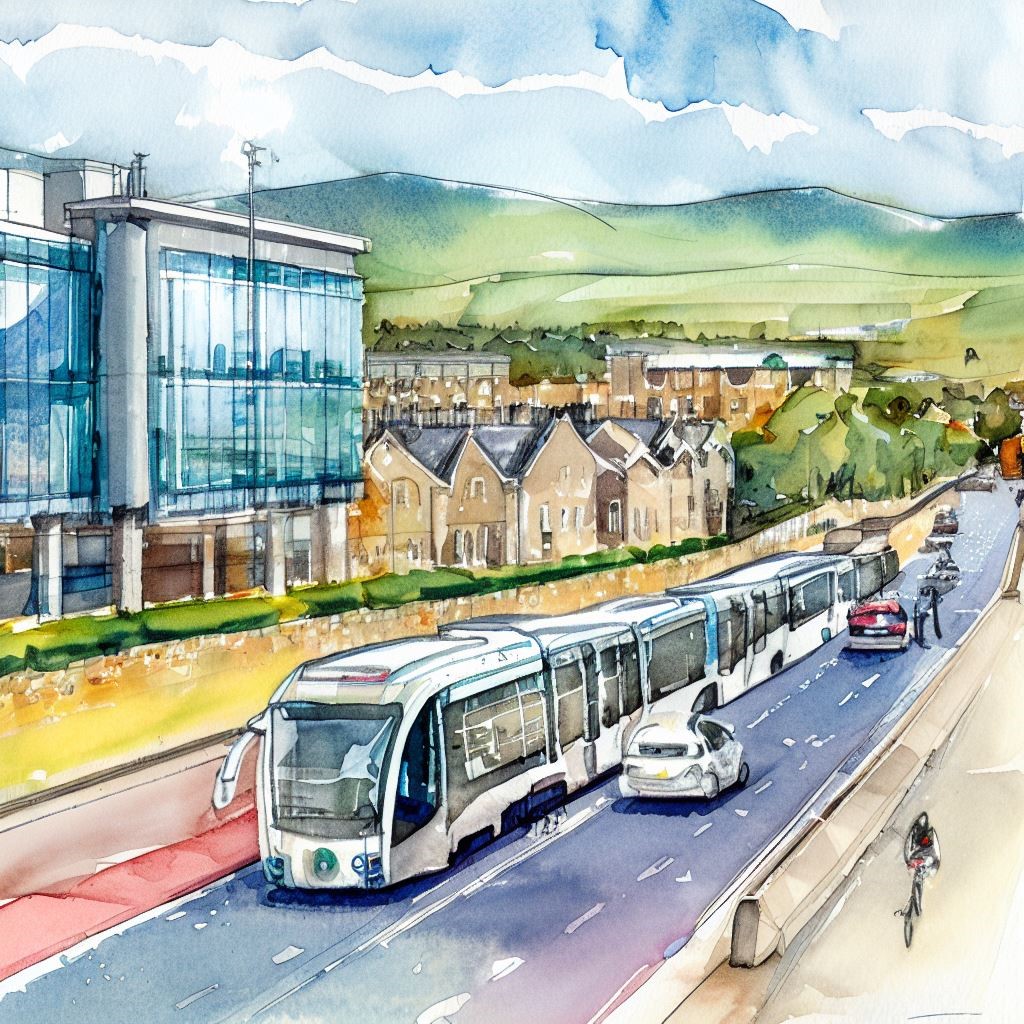Professor Iain Docherty, University of Stirling, and Commissioner, Forth Valley Connectivity Commission

There has been a lot of transport investment benefitting the Forth Valley in recent years. Following the reopening of the Stirling to Alloa line, railways serving Stirling, Falkirk, and Clackmannanshire were electrified, and now have high-quality, modern trains. The Clackmannanshire Bridge and completion of the M80 have made access by road easier too.
But there’s a snag. It’s quick and easy to move in and out of the region, but moving between its communities is harder, especially for people with limited access to a car.
Take, for example, a small business owner in the Trossachs who doesn’t own a car. Let’s say she has a chronic health condition and needs to travel frequently to medical appointments in Larbert. She doesn’t qualify for patient transport, and the bus journey between Callander and Forth Valley Royal Hospital takes almost two hours, sometimes longer if a delay causes her to miss her connection in Stirling. This means she can only attend appointments in the middle of the day, taking even more time away from her business. Her condition also makes the long journey an uncomfortable one.
She knows that in the future she will require more frequent appointments and is considering relocating to Larbert to be closer to the hospital. However, this would mean sacrificing her business and her local support network. Either way, she feels she can’t win.
The Forth Valley Connectivity Commission was established to examine transport challenges like these. Its mission was to suggest how Clackmannanshire, Falkirk, and Stirling Councils might collaborate to improve transport in the region. Commissioners heard evidence from those involved in transport, planning, healthcare, and other regional voices. Its final report, published this week, calls for three ‘big moves’ that would transform the region’s transport and improve quality of life for its people. Each will take years to deliver, but meaningful improvements can be achieved quickly.
The starting point is to stop taking planning decisions that make providing good services for everyone difficult. It’s time to stop building new homes, supermarkets and public facilities where they are difficult or even impossible to reach without a car. Instead, the region should focus on improving its urban centres, transforming Alloa, Falkirk, and Stirling from outdated, car-dominated places into more vibrant service hubs with high-quality housing.
Transport can help achieve this, but only if we plan for the future. Environmental commitments mean we will have to use our cars less, and other modes of transport more. The region’s geography means that active travel is an option for many journeys, but a reinvigorated bus network would make the biggest difference. The report argues that the three councils should work together to develop a regional bus rapid transit system, with key routes served by high-quality vehicles running in dedicated lanes. This will take time, but work can be started on better buses and less congested routes straight away.
These recommendations can help people like our business owner example. It’s still a long way from Callander to Larbert, but the regular, direct bus service means that she can rely on public transport to access her appointments. With that peace of mind and her support network around her, she now feels confident to stay in her home and continue the business that she worked so hard to establish.
These circumstances are typical for many in Stirling and the Forth Valley. Working together, the region’s three councils could use better transport and connectivity to improve quality of life for everyone.
